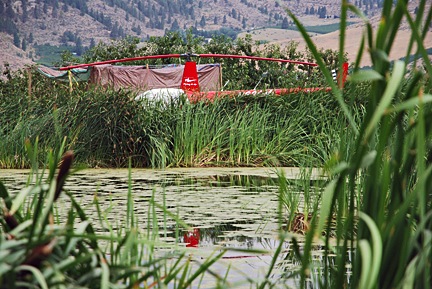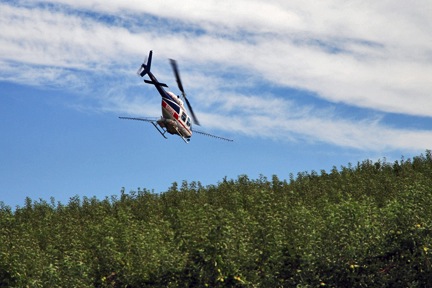I answer another request for “my insights” submitted via e-mail.
This morning, I got another e-mail message today from someone interested in starting a career as a helicopter pilot. Here’s the content, with identifying information XXXed out:
I ran across an article about you and Flying M Air in this years Az. Highways and thought you might be able to offer some advice when you had some free time (though reading about all of what you do on the job, I’m thinking you don’t have much free time).
I am currently a director for a large multi-national XXX company in XXX doing global IT security operations, as I have done for other fortune 500 companies for the past 8+ years. I foresee another 2-4 years in the industry as I try and setup my exit strategy from corporate America. The deeper I get into the business side of things (finishing my MBA at XXX in May) and coupled with what I already know from doing IT security for large corps, the less I like the idea of spending the next 20 years behind a desk working for a corporation.
I’ve always loved helicopters as far back as I can remember. Tried to get a guaranteed shot at them in the Army but they wanted me to be in the infantry first so I entered the Air Force as an EOD tech (not helo’s but still fun). I did get to partake in several rides in Blackhawks getting air dropped into zones for work and training. Had a blast, even in the back of helo.
You seem to have escaped the corporate trap and entered the world of helicopters so I am hoping you can share some tips/pointers on how to enter the field. My current research and plan has me thinking I go to XXX helicopters to start training in 2010/1 and start to work my way up to get commercial to instructor tickets while working corporate job. Then I am not sure how to make the break from corporate America into aviation. I am really interested in medevac jobs as well as other jobs around XXX (versus long range/extended travel as I have a family based in XXX).
So in an attempt to wrap up what has become a long winded email, any insights, pointers, advice you might be able to share when/if you have some free cycles would be greatly appreciated.
First, I want to say that it was a pleasure to receive an e-mail like this from someone who was actually literate and could explain himself clearly. I suspect this guy can succeed at whatever he puts his mind to.
In formulating a response to him, I realized that although this blog has lots of posts containing my thoughts and opinions and experience on the topic, there isn’t one post that links to all of it. So I composed a response to him that collected the links and offered some additional words of advice. I’m repeating that response here for the benefit of folks looking for the same kind of information. In the future, I’ll simply link to this.
Thanks for writing.
I need to clarify something: I didn’t escape corporate America for a job as a pilot. I escaped for a freelance career as a writer. That’s where I make my money. If I had to depend on flying income and my flying business to cover all helicopter costs AND pay me enough to cover my mortgage and other living expenses, I’d be broke.
I’ve written about helicopter pilot careers extensively in my blog and that’s probably the best place to get my insights. Here are some specific posts to get you started:
- The Helicopter Job Market (be sure to go through ALL the comments)
- Helicopter Training and Broken Promises
- How to Start Your Own Helicopter Charter Business
- Real Pilot Experience
- Two Ways Not to Ask for a Pilot Job
And, for a lighter look, check out the video in this post: The Truth about Flying Helicopters
My biggest piece of advice is to NOT sign up for any “program” that takes you through the process of getting your ratings if that program requires an up-front commitment. You’ll understand why if you read the “Broken Promises” link above.
Don’t be lured by promises of a high-paying job as a helicopter pilot. It will likely take at least 5-10 years to quality for such a job and right now, the helicopter pilot job market is absolutely overflowing with low-time pilots competing for the entry level jobs needed to move forward in a career. If an employer has a choice between a 25-year-old career pilot and a 40-year-old on his second career, who do you think he’ll choose? Hint: inexperienced kids are willing to take all kinds of crap from employers because they simply don’t know any better.
Be a pilot because you love to fly — and be prepared to sink a LOT of money into flying before you see any money in return.
On that dismal note, good luck.
One more word of advice: if you want to be a helicopter pilot, subscribe to publications about helicopters, such as Vertical (excellent), Rotor & Wing (so-so but free), and HelNews (Australia-based but excellent). If you’re going to participate in helicopter forums, take every comment with a grain of salt and try to block out the comments by the trolls. I don’t think forums are worth the time, but I have limited time and patience; if you have more, give them a try. Immerse yourself in the helicopter pilot/flying community before making a career decision and spending a lot of money on training.



